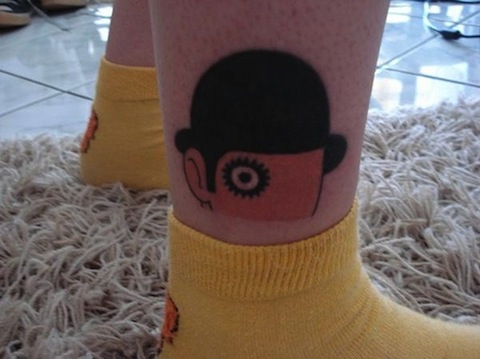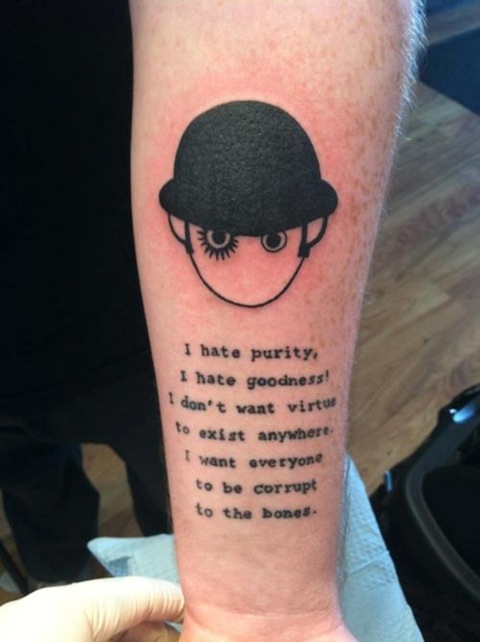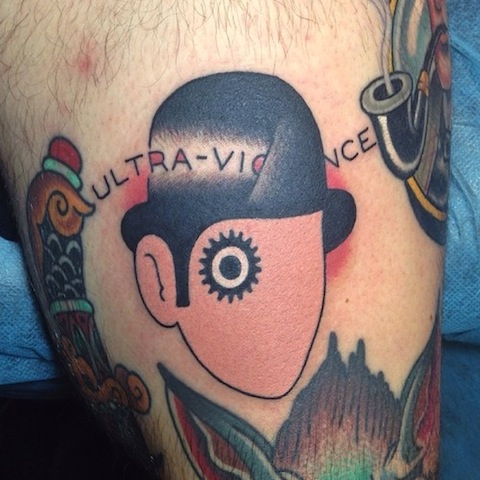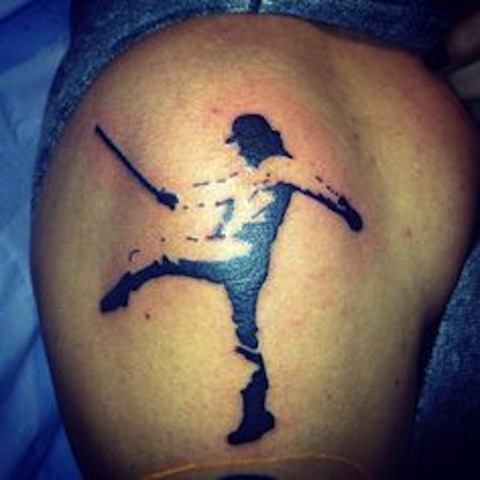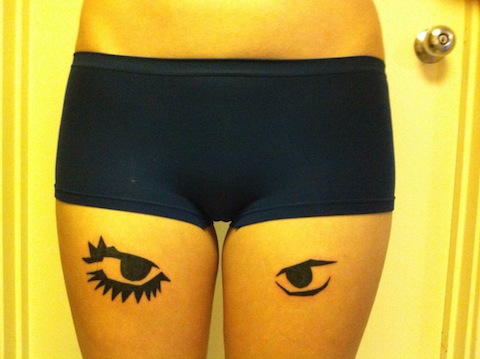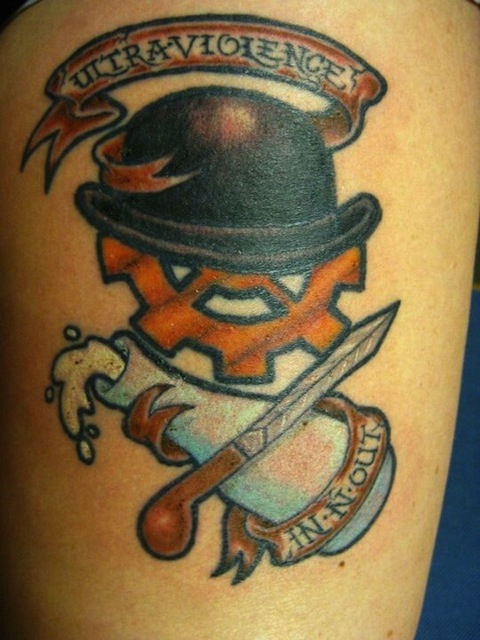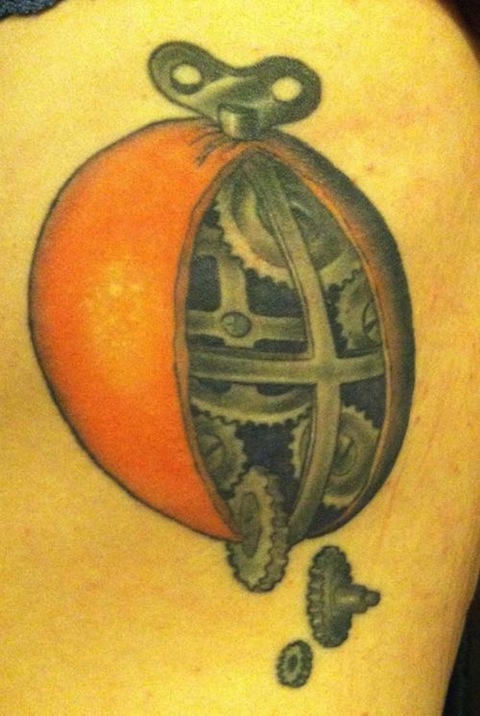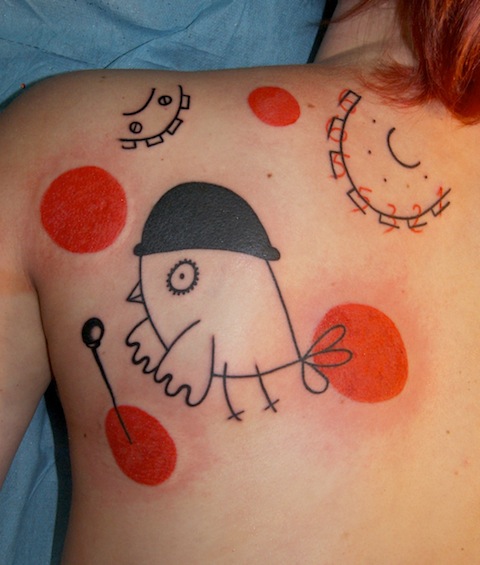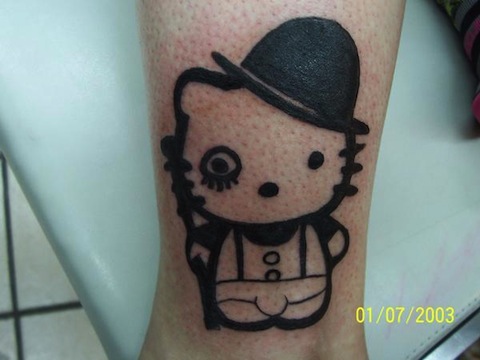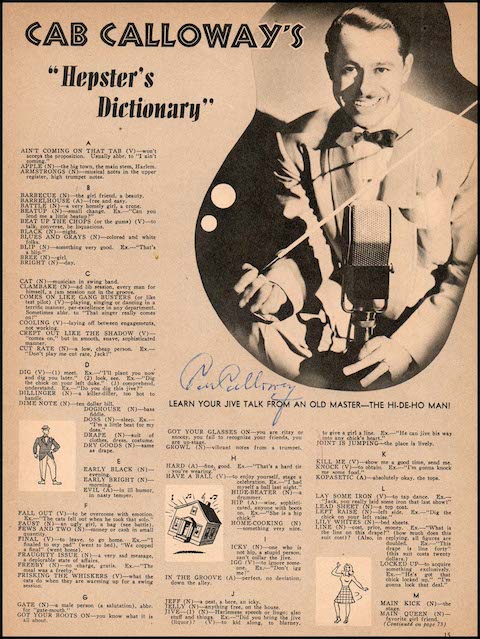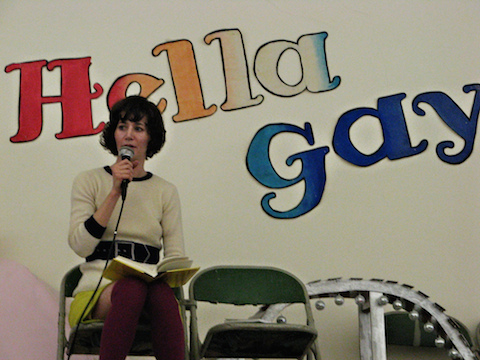
“Miranda-july-reading” by Alexis Barrera / Licensed under CC BY 2.5 via Wikimedia Commons.
Ah, the joys of dining at a new friend’s home, knowing sooner or later, one’s hostess’ bladder or some bit of last minute meal preparation will dictate that one will be left alone to rifle the titles on her bookshelf with abandon. No medicine cabinet can compete with this peek into the psyche.
Pity that some of the people whose bookshelves I’d be most curious to see are the least likely to open their homes to me. That’s why I’d like to thank The Strand bookstore for providing a virtual peek at the shelves of filmmakers-cum-authors Miranda July and Lena Dunham. (Previous participants in the Authors Bookshelf series include just-plain-regular authors George Saunders, Edwidge Danticat and the late David Foster Wallace whose contributions were selected by biographer D.T. Max.)

“Lena Dunham” by David Shankbone — Licensed under CC BY 3.0 via Wikimedia Commons.
I wish Dunham and July had offered up some personal commentary to explain their hand-picked titles. (Surely their homes are lined with books. Surely each list is but a representative sampling, one shelf from hundreds. Hmm. Interesting. Did they run back and forth between various rooms, curating with a vengeance, or is this a case of whatever happened to be in the case closest at hand when deadline loomed?)
Which book’s a longtime favorite?
Which the literary equivalent of comfort food?
Are there things that only made the cut because the author is a friend?
Both women are celebrated storytellers. Surely, there are stories here beyond the ones contained between two covers.
But no matter. The lack of accompanying anecdotes means we now have the fun of inventing imaginary dinner parties:
ME: (standing in the living room, calling through the kitchen door, a glass of wine in hand) Whoa, Lena, I can’t believe you’ve got Important Artifacts and Personal Property from the Collection of Lenore Doolan and Harold Morris, Including Books, Street Fashion, and Jewelry!
LENA DUNHAM: (polite, but distracted by a pot of red sauce) I know, isn’t that one great?
ME: So great! Where’d you buy it?
LENA DUNHAM: Uh, The Strand, I think.
ME: Me too! Such a great conceit, that book. Wish I’d come up with it!
LENA DUNHAM: I know what you mean.
ME: Ooh, you’ve got Was She Pretty?
LENA DUNHAM: Hmm? Oh, yeah, my friend Miranda gave me that.
ME: (glancing between the two books.) Wait! Leanne Sharpton. Leanne Sharpton. I didn’t realize it’s the same author.
LENA DUNHAM: As what?
ME: The person who wrote Was She Pretty? also wrote Important Artifacts and Personal Property-
ME & LENA DUNHAM IN UNISON: — from the Collection of Lenore Doolan and Harold Morris, Including Books, Street Fashion, and Jewelry!
LENA DUNHAM: Gotta love that title.
ME: Why do you have all these kids’ books?
LENA DUNHAM: Those are from my childhood.
ME: (sliding an unnamed title off the shelf, eyes widening as I read the shockingly graphic personal inscription on the flyleaf) Oh?
LENA DUNHAM: I really relate to Eloise.
ME: (hastily sliding the volume back onto the shelf before Lena can catch me snooping) Oh yeah…ha ha.
LENA DUNHAM: Are you the one who likes graphic novels?
ME: Me? Yes!!!
LENA DUNHAM: Yeah. My friend Miranda does too.
ME: That’s funny - Sex and the Single Girl right next to Of Human Bondage.
LENA DUNHAM: (cursing under her breath)
ME: Need help?
LENA DUNHAM: No, it’s just this damn …arrrggh. I hate this cookbook!
ME: (brightly) Smells good!
LENA DUNHAM: … crap.
ME: So, is Adam Driver coming? Or Ray or anybody?
LENA DUNHAM: (testily) You mean Alex Karpovsky?
ME: (flustered) Oh, ha ha, yes! Alex! … I sent him a Facebook request and he accepted.
LENA DUNHAM: (mutters under her breath)
ME: Design Sponge? Really? What’s someone in your shoes doing with a bunch of DIY decorating books?
LENA DUNHAM: (coldly) Research.
Actually, maybe it is better to admire one’s idols’ bookshelves from afar.
I’m chagrined that I don’t recognize more of their modern fiction picks. That wasn’t such a problem when I was measuring myself against the 430 books on Marilyn Monroe’s reading list.
Thank heaven for old standbys like Madame Bovary.
In all sincerity, I was glad that Dunham didn’t try to mask her love of home decor blog books.
And that July included her husband’s monograph, Our Bodies, Ourselves and a handbook to raising self-confident babies.
One’s shelves, after all, are a matter of taste. So, celebrate the similarities, take their recommendations under advisement, see below and read what you like!
A Time for Everything — Karl Ove Knausgaard
A Very Young Dancer — Jill Krementz
Alice James: A Biography — Jean Strouse
Animacies: Biopolitics, Racial Mattering, and Queer Affect — Mel Y. Chen
Arthur Tress: The Dream Collector — John Minahan
Building Stories — Chris Ware
Cruddy: An Illustrated Novel — Lynda Barry
Diaries, 1910–1923 — Franz Kafka
Do the Windows Open? — Julie Hecht
Dorothy Iannone: Seek The Extremes! (v.1) — Barbara Vinken, Sabine Folie
Edgewise: A Picture of Cookie Mueller — Chloe Griffin
Embryogenesis — Richard Grossinger
Friedl Kubelka Vom Groller — Melanie Ohnemus
American War — Harrell Fletcher
Hannah Höch: Album (English and German Edition) — Hannah Höch
How to Build a Girl — Caitlin Moran
Humiliation — Wayne Koestenbaum
It’s OK Not to Share and Other Renegade Rules for Raising Competent and Compassionate Kids — Heather Shumaker
King Kong Theory — Virginie Despentes
Leaving the Atocha Station — Ben Lerner
Lightning Rods — Helen DeWitt
Lost at Sea: The Jon Ronson Mysteries — Jon Ronson
Maidenhead — Tamara Faith Berger
Man V. Nature: Stories — Diane Cook
Mike Mills: Graphics Films — Mike Mills
Napa Valley Historical Ecology Atlas: Exploring a Hidden Landscape of Transformation and Resilience — Robin Grossinger
Need More Love — Aline Kominsky Crumb
Our Bodies, Ourselves (Completely Revised and Updated Version) — Boston Women’s Health Book Collective
Jim Goldberg: Rich and Poor — Jim Goldberg
Sanja Ivekovic: Sweet Violence — Roxana Marcoci
Sophie Calle: The Address Book — Sophie Calle
Staring Back — Chris Marker
Taryn Simon: A Living Man Declared Dead and Other Chapters, I‑XVIII — Homi Bhabha, Geoffrey Batchen
Tete-a-Tete: The Tumultuous Lives & Loves of Simone De Beauvoir and Jean-Paul Sartre — Hazel Rowley
The Hour of the Star — Clarice Lispector
The Illustrated I Ching — R.L. Wing
Two Kinds of Decay: A Memoir — Sarah Manguso
Traffic — Kenneth Goldsmith
Two Serious Ladies — Jane Bowles
Was She Pretty? — Leanne Shapton
What is the What: The Autobiography of Valentino Achak Deng: A Novel — Dave Eggers
Why Did I Ever — Mary Robison
Women in Clothes — Sheila Heti
Working: People Talk About What They Do All Day and How They Feel About What They Do — Studs Terkel
Your Self-Confident Baby: How to Encourage Your Child’s Natural Abilities — From the Very Start — Magda Gerber
Far from the Tree — Andrew Solomon
How Should a Person Be? — Sheila Heti
The Girls’ Guide to Hunting and Fishing — Melissa Bank
A Little History of the World — E. H. Gombrich
Anne of Green Gables — L.M. Montgomery
Apartment Therapy Presents: Real Homes, Real People, Hundreds of Real Design Solutions — Maxwell Gillingham-Ryan
Ariel: The Restored Edition — Sylvia Plath
Bad Feminist: Essays — Roxane Gay
Bastard Out of Carolina (20th Anniversary Edition) — Dorothy Allison
Blue is the Warmest Color — Julie Maroh
Brighton Rock — Graham Greene
Cavedweller - Dorothy Allison
Country Girl: A Memoir — Edna O’Brien
Crazy Salad and Scribble Scribble: Some Things About Women and Notes on Media — Nora Ephron
Design Sponge at Home — Grace Bonney
Dinner: A Love Story: It All Begins at the Family Table — Jenny Rosenstrach
Eleanor & Park — Rainbow Rowell
Eloise — Kay Thompson
Eloise In Moscow — Kay Thompson
Eloise In Paris — Kay Thompson
Fanny At Chez Panisse — Alice Waters
Goodbye, Columbus and Five Short Stories — Philip Roth
Holidays on Ice — David Sedaris
Important Artifacts and Personal Property from the Collection of Lenore Doolan and Harold Morris, Including Books, Street Fashion, and Jewelry — Leanne Shapton
Lentil — Robert McCloskey
Love Poems — Nikki Giovanni
Love, an Index (McSweeney’s Poetry Series) — Rebecca Lindenberg
Love, Nina: A Nanny Writes Home - Nina Stibbe
Madame Bovary: Provincial Ways — Gustave Flaubert
NW: A Novel — Zadie Smith
Of Human Bondage — W. Somerset Maugham
Random Family: Love, Drugs, Trouble, and Coming of Age in the Bronx — Adrian Nicole LeBlanc
Rebecca — Daphne Du Maurier
Remodelista — Julie Carlson
Selected Stories, 1968–1994 - Alice Munro
Sex and the Single Girl — Helen Gurley Brown
She’s Come Undone — Wally Lamb
Somewhere Towards the End: A Memoir — Diana Athill
Stet: An Editor’s Life - Diana Athill
Sula — Toni Morrison
Summer Blonde — Adrian Tomine
Super Natural Every Day: Well-Loved Recipes from My Natural Foods Kitchen — Heidi Swanson
Tenth of December - George Saunders
Tess of the D’Urbervilles — Thomas Hardy
The Boys of My Youth - Jo Ann Beard
The Collected Stories of Lydia Davis — Lydia Davis
The Dud Avocado — Elaine Dundy
The Important Book — Margaret Wise Brown
The Journalist and the Murderer — Janet Malcolm
The Liars’ Club: A Memoir — Mary Karr
The Love Affairs of Nathaniel P.: A Novel — Adelle Waldman
The Marriage Plot — Jeffrey Eugenides
The Philosophy of Andy Warhol (From A to B and Back Again) - Andy Warhol
The Story of Ferdinand — Munro Leaf
The Woman in White - Wilkie Collins
The Writing Class — Jincy Willett
This Is My Life - Meg Wolitzer
Tiny Beautiful Things: Advice on Love and Life from ‘Dear Sugar’ - Cheryl Strayed
Wallflower At the Orgy — Nora Ephron
Was She Pretty? — Leanne Shapton
We Have Always Lived In the Castle — Shirley Jackson
What Lips My Lips Have Kissed: The Loves and Love Poems of Edna St. Vincent Millay — Daniel Mark Epstein
What She Saw… — Lucinda Rosenfeld
What the Living Do: Poems — Marie Howe
While I Was Gone - Sue Miller
With or Without You: A Memoir — Domenica Rut
Women in Clothes — Sheila Heti
Related Content:
David Foster Wallace’s Love of Language Revealed by the Books in His Personal Library
The 430 Books in Marilyn Monroe’s Library: How Many Have You Read?
- Ayun Halliday is an author, illustrator, and Chief Primatologist of the East Village Inky zine. Follow her @AyunHalliday
